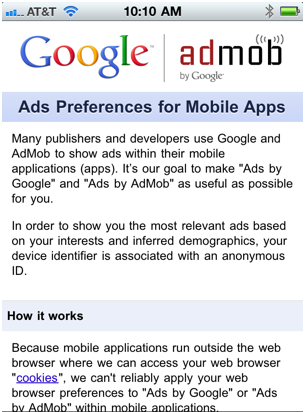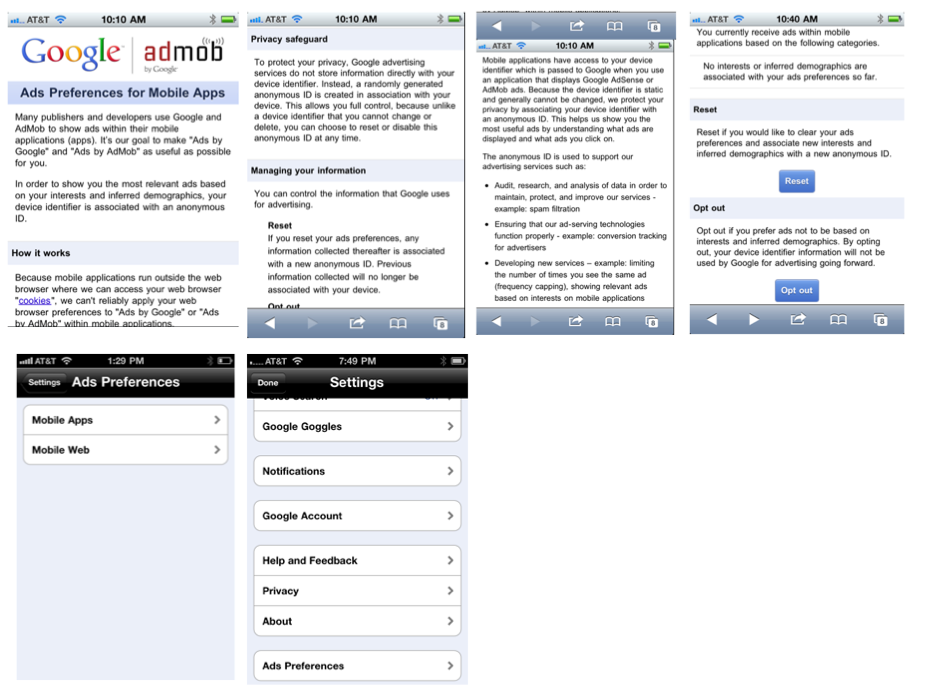Google Intros New Privacy Controls For Mobile Consumers
To date Google has not used the mobile handset UDID “device identifier” to target mobile advertising via its AdSense for mobile and AdMob networks. For several reasons that have to do with ad performance, Google has decided to use the device identifier going forward. That will enable the company to do frequency capping, behavioral targeting […]

But privacy is also being upgraded by Google.
Google Going the Extra Mile
Seeking to avoid others’ mistakes and “do the right thing” Google wisely wants to ensure consumer privacy controls are in place that give people the ability to opt-out of more precise ad targeting. (Mobile ad network JumpTap offers something similar.) The new privacy controls are conceptually similar to those offered in the context of Google’s PC “interest-based ads.”
The company is going an extra mile to enable consumer control and educate users about mobile ads privacy. As an aside, Google doesn’t do “interested based advertising” (behavioral targeting) on mobile today but intends to at some point down the line.
Most other mobile ad networks do use the handset unique identifier in some way to target ads or manage ad serving to individual users (e.g., frequency capping). The widespread practice of using UDID numbers has resulted in a grand jury investigation of mobile apps, ad networks and the consumer data being shared without knowledge or consent.
“Double Anonymization”
Google’s privacy plan involves the following safeguards to protect against collection of “personally identifiable information”:
- Double-anonymization of the device identifier (hashed before sent to our server, then mapped to an anonymous ID);
- Easy opt-out (in Android market settings for Android users, and Google search app for iOS);
- In-app notice, through ads running across AdSense and AdMob in-app networks that all users will see.
This “double anonymization” will prevent Google from seeing actual UDIDs. Consumers will be able to opt-out through the Android market (for Android handsets) and iOS settings for the Google search app (for the iPhone and iPad).
Running Ads to Educate the Public
To Google’s credit the company will be running ads on AdSense for Mobile and AdMob’s network to educate users about the new privacy controls and the option to opt-out. Here’s an example banner that might appear:
And here are a few screens that show privacy controls and explanations that will appear in the Google search app for iOS:
Beyond “doing the right thing,” Google is being cautious here in part because anything it does with privacy implications will be the subject of intense scrutiny now and in the future.
Contributing authors are invited to create content for Search Engine Land and are chosen for their expertise and contribution to the search community. Our contributors work under the oversight of the editorial staff and contributions are checked for quality and relevance to our readers. The opinions they express are their own.
Related stories
New on Search Engine Land
